
25 years of ITEA
The ITEA journey
A conversation between Zeynep Sarılar, Philipe Letellier and Hervé MokraniITEA is celebrating its 25th birthday – as Chairwoman Zeynep Sarılar puts it, “like a young adult.” And like most young adults, ITEA has been looking back on its journey so far and speculating on what lies in the future. Joining Zeynep in these reflections are former Vice-chairman Philippe Letellier and long-time ITEA participant Hervé Mokrani of Airbus Defence and Space.

Looking back
Where else to start but at the beginning? For Philippe, now retired, joining ITEA wasn’t just a change in his career; it offered a change in perspective. “Before coming to ITEA, I had rather negative experiences with European projects. We had been successful in setting up projects but without unique results and with a lot of bureaucracy. So, when I was contacted by Gérard Roucairol, a trusted colleague from ITEA, I had some doubts, but then I discovered a team who are involved, not bureaucratic at all and very concerned with impact. I discovered a Community that was very open – more open than me! – with competition on the market but rather open cooperation in the projects. Step by step, I discovered a Community of friends.”
Like Philippe, Hervé’s experiences with European projects go back a long way: almost 30 years ago, before Eureka was composed of Clusters like ITEA. With the split to umbrellas for microelectronics and software, he sensed an opportunity. “The main benefit of ITEA for our company and our ecosystem was that we were in a position to compose topics identified by the consortium. In the EU framework, you have to propose things to answer specific questions. Sometimes, the topics do not cover all of the areas you want to work on. EU programmes are also more oriented to low TRLs, while ITEA projects are really focused and industry-driven, supporting activities to reach TRL 6 and sometimes 7. Passing this gap between 6 and 7 – the well-known valley of death – is something you need to do if you want your R&T results to be part of real products and services.”
As Hervé notes, there’s more to bridging this gap than technology: the development of a spirit of trust has proven vital to ITEA by providing opportunities for partners to discuss things informally at all sorts of events and gatherings. These ‘Any Other Business’ parts of meetings often alert participants to problems and potential solutions further down the line, sometimes providing the seed for future projects. “Thanks for reminding me of all these good properties of ITEA!” smiles Zeynep. “Hervé, this bottom-up approach and trusting, friendly environment is critical. And Philippe, you were saying that you learned a lot. I can assure you that we learned a lot from you too!”
Change welcome
Of course, the culture of trust that exists at ITEA had to be cultivated over time in a variety of ways. When Zeynep probes the interviewees on notable experiences that they believe significantly influenced ITEA’s journey, Philippe’s mind goes straight to the flexible, back-and-forth nature of the review processes. “What was good about them was that we did not just look at a set of bullet points and say, ‘you have to do that, then that, then that’. The spirit of the review is helping the consortium to keep the potential of the impact there.”
“Absolutely,” agrees Hervé. “There’s almost one year to prepare a proposal, so it’s important to spend that clearly defining who will do what and what the impact will be of which task. The world is continuously evolving in the meantime. What was true at the beginning of setting up a proposal may not still be useful. But without the reviews, there is a danger of staying too much to yourself and missing this. ITEA then offers the capability to do change requests. Of course, it’s not a 180-degree switch! But 20 or 30 degrees of change is easily accepted because what is really important is that there’s something at the end for a dedicated market.”
“As you mention, change requests offer flexibility that makes ITEA very different to other programmes,” adds Zeynep. “At one point, we said that we should maybe stop the reviews, but all of the project leaders said no, no, no. It was a big moment for me seeing how these reviews are appreciated.”
ITEA has been successful during these 25 years by sticking to the demands of society. It’s real life.
Trust in the process
Another key development to ensure mutual trust between ITEA and its participants has been the fair and transparent selection process following a two-step approach. “This means clearly stating the current situation, the technical or commercial issue and how you are going to solve this with the partners’ expertise,” Hervé continues. “You get feedback from the reviewers with key questions. As long as you answer the questions properly, the project is often accepted, so there’s a very high success rate. This high level of trust has been accepted by the Public Authorities as well because they participate in the selection process.”
It’s a kind of magic
Philippe nods. “I got a lot of feedback from Public Authorities saying that how we manage the final reviews is very good for them. We poke our fingers where we need to. We are not good friends with the consortia and the Public Authorities are rather impressed by how tough we are. At the same time, we try to enhance, not destroy. And I never saw somebody from one of the big players try to do something just for the good of his company in the final review. It’s again part of the ITEA spirit and was high-level education for me. When I was with my old companies, I was taught to do everything for them and not for others. Through ITEA, I got over this way of thinking and found a sort of magic.”
As an example of this magic, Zeynep thinks back to a particularly fond moment in Philippe’s ITEA tenure. “I remember in the second review of the ACOSAR project, you challenged them to make a standard. You said that you’d bring them champagne if it was a global standard. One year later, they had indeed created a global standard from scratch.”
Looking ahead
In spite of their trip down memory lane, Hervé, Philippe and Zeynep are all aware that ITEA can never remain static in its bid to bring society forward. “I wish to carry on with all the best moments of ITEA but, as we all know, there is always the mood for new things,” says Hervé. “When ITEA was created 25 years ago, it was only European countries participating. Some new opportunities here could be increasing transnational cooperation – not just European but worldwide – and taking global issues like climate change more into account.”
“It’s not easy, but ITEA 4 has the challenge of sustainability in it,” Zeynep notes. “We don’t mean just sustainable growth for companies; we mean a kind of responsibility to take care of the sustainability of human life and the planet. This means that we have been thinking about how to implement this not just at the ITEA level but at the project level too.”
“It’s very important to keep to the evolution of societal needs. But I’m not scared because we’ve managed this well for 25 years. Nevertheless, the world is exploding. I agree that a new target can be trying to work with other partners that don’t have the same capabilities as us but that are trying to reach where we are,” suggests Philippe. “And I’m impressed at how concerned young people are – more concerned than we were – and how they refuse to work in places where they lose a sense of the value. If we can explain to them that an ITEA project is not just in the interests of the few, we can help guarantee the security of ITEA and our goals.”
Widening the scope
The interests of the many has indeed been an ongoing theme of ITEA’s journey over the last 25 years, having increased from 15 countries at the start to 35 today. As Zeynep points out, the United Kingdom has most recently joined the fray and ITEA is actively courting Switzerland and Chile. “For the first time, 50% of project leaders are currently new to ITEA. All of the old friends are still here too, but we’re very open. For the future, I’m thinking of places like Moldova, Kazakstan and Georgia that have skilled engineers but lack opportunities for international collaboration.”
“To prepare for the future, your daily needs like food and shelter must be met so that you can apply higher thinking to the problems in your life. Giving this opportunity to everybody in the world would mean less fighting,” says Hervé. “This is where ITEA is a very strong tool because software can be developed anywhere in the world as long as you have the skills. However, the issue is that while the world is digitalising, we are consuming more and more. Global CO2 is continuously increasing. How can we do more in terms of software capabilities while reducing global consumption? The challenge for us will be doing more with less.”
“ITEA has been successful during these 25 years by sticking to the demands of society. It’s real life,” Philippe reflects. “When you are retired, you take a step back and look at the world. Perhaps because you’re older, the world is less radiant than you dreamed. But there are always people who are open to solving dilemmas and want to look to a positive path. It’s true of all developing countries, of the countries most affected by climate change. ITEA can take up the challenge to help these countries, to try to bring them into the first division of innovation. If they can put their problems on the table, we can work on a solution together. I’ve thought about it strongly and I think that, as ITEA, we should do something. It’s a big challenge, but we are used to big challenges.”
Zeynep subscribes wholeheartedly to these final remarks by Hervé and Philippe. “We have always been trying to take on societal challenges and, for global impact, we need to take a balanced position in taking care of the future. I see it as a way to place ITEA as an ambassador of peace. Thank you both for your time.”

Other chapters
Use the arrows to view more chapters
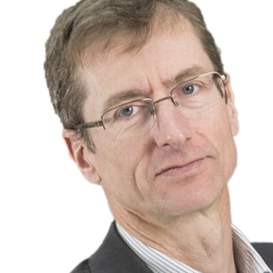
Editorial
By Jean-François Lavignon

25 years of ITEA
The ITEA journey
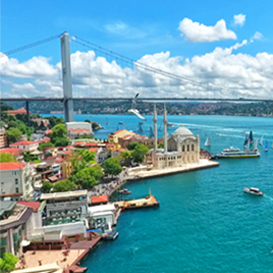
Country Focus: Türkiye
Investing in ICT to enhance competitiveness and international profile
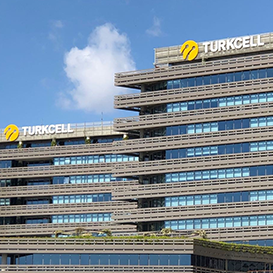
Turkcell
Becoming a deeper part of the ecosystem
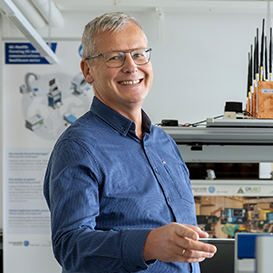
Community Talk with Frank Golatowski
A long-lasting happiness

ITEA Success story: TESTOMAT Project
Customised test automation, saving time and improving quality

25 years of ITEA
Ground-breaking innovations we’re still grateful for today
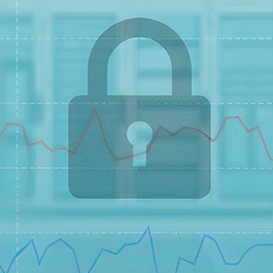
SME in the Spotlight: Solana Networks
Looking to the horizon of network security

ITEA Success story: COMPACT
Faster, more efficient software through automation
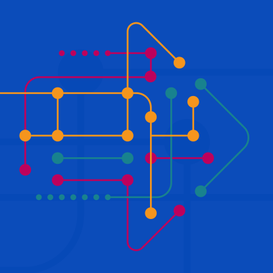
Navigating the future of ITEA
Current challenges and future directions
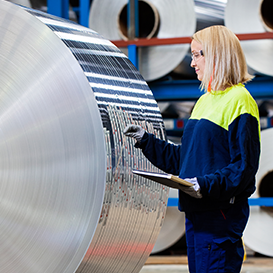
By and for end users
Gränges further digitalises aluminium engineering with the help of VMAP analytics
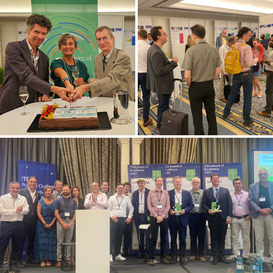
25 years of ITEA: PO Days through time
Celebrating 25 years of international collaboration

